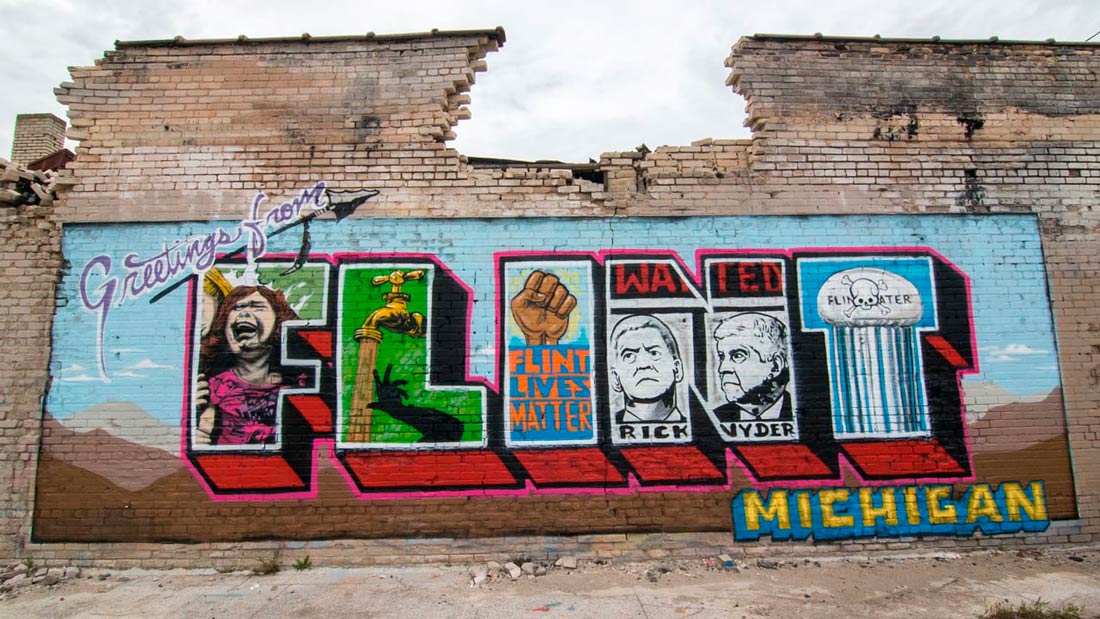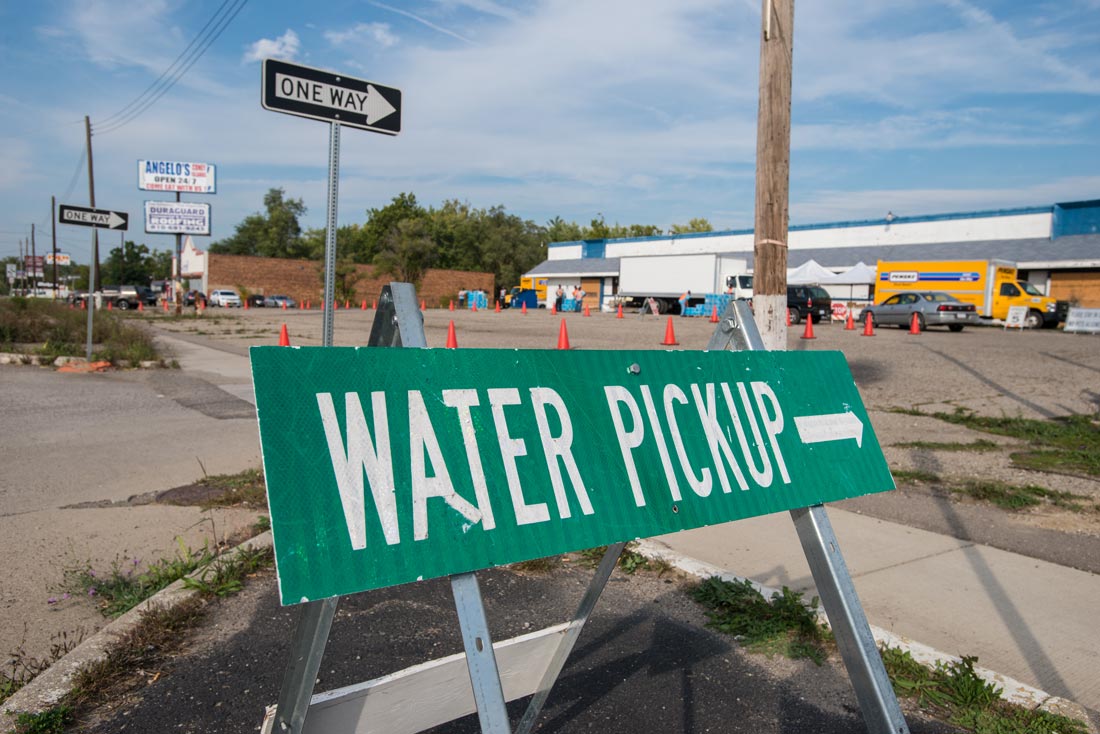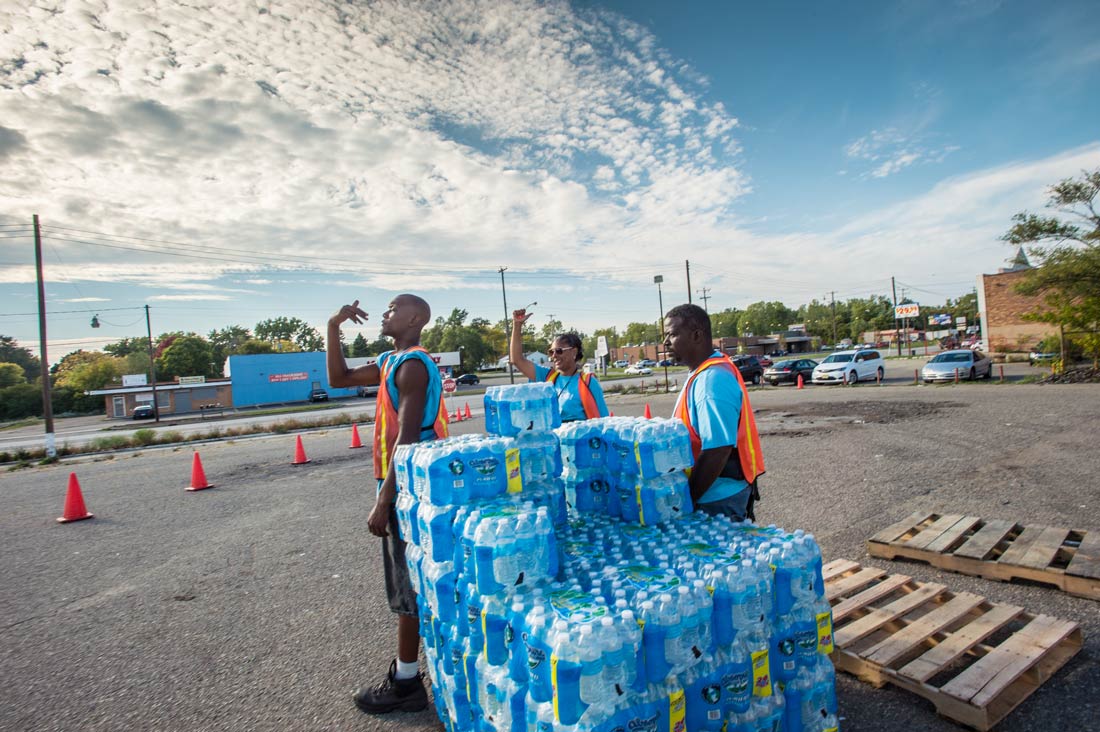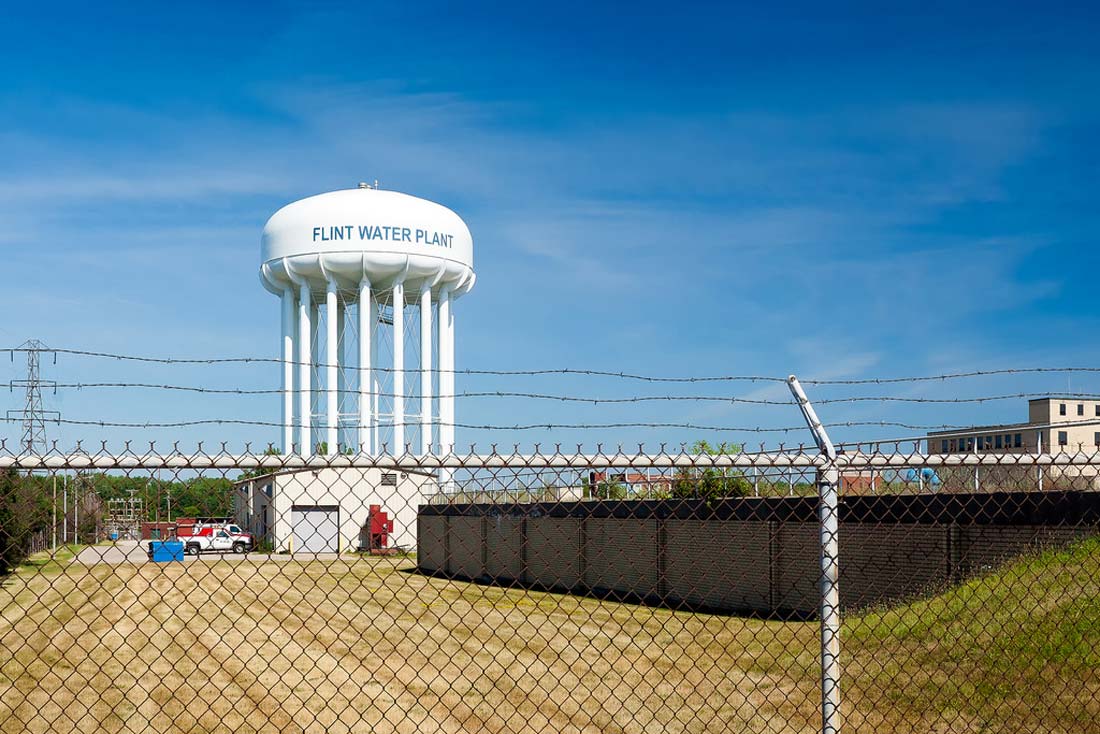Every day in America there are citizens whose faucets flow with contaminated drinking water. Nowhere was this more visible than Flint, Michigan, where the late response of public officials to signs of wide-spread lead poisoning left many residents severely ill and deeply distrustful of city and state government. The Flint Water Crisis is a reminder that, along with materials, labor, and financing, trust is an essential component to the design and implementation of infrastructure. For lessons learned from this crisis we turned to two sources. First, we interviewed Steve Friess, journalist and author of “For All They Know,” a case study on the crisis that shows how challenging life has become in Flint and how difficult it has been for officials to establish a sense of water security. Secondly, to illuminate the larger problem of contaminated water in America, we turned to the National Resources Defense Council, which has worked to illustrate the scope of lead and copper contamination nationwide and offer recommendations going forward for Flint and the rest of the nation.
Title Photo from “Greetings from Flint — Chapter 1” by COlabs + INDECLINE.
Water, filter distribution, and sample turn-in station in Flint. USDA photo by Lance Cheung.
What most surprised you while you were investigating the crisis in Flint?
The thing that surprised me the most was how little of what we take for granted as known science is actually known. Most of us assume science understands water biology, the delivery of safe water to people, and the life cycle of pathogens and bacteria. It turns out that scientists don’t actually know this. The process of looking at what was happening in Flint brought to light how many times scientists and other experts would answer what I believed was a reasonably simple question with, “I don’t know.”
And that scientific uncertainty extends beyond water quality in Flint?
Joan Rose [expert in water microbiology, water quality, and public health safety] from Michigan State University was somebody I thought could explain how Legionella or any other bacteria live and move through the water system to infect people or make them sick.
She said that there’s quite a lot we don’t know about the microbial health of water. I assumed at that moment that she was talking about Flint specifically. So I asked her, “You mean in Flint?” She said, “No, I mean in general.” These are the experts. It was surprising that they were so open about the things that are unknown.
Currently, Flint is in the process of replacing hundreds of miles of pipe throughout the city. Where is the city in that process, and how long will this work take?
It’s hard to tell. Congress just passed more than $100 million to help pay for the replacement of the pipes in Flint. There are different estimates as to how many pipes need to be replaced. The record keeping on where the piping—lead, galvanized steel, and copper—is located is old and antiquated, and often inaccurate or hard to read. It creates a logistical challenge to figure out exactly how many pipes need to be replaced and where they are. It’s certainly impossible to know how long it will take.
How did the condition of Flint’s water infrastructure contribute to the crisis?
The original problem—the way that Flint ended up being poisoned—was not simply because some of the pipes were made of lead, but because they put improperly treated water through a system that was corrosive. It pushed away the protective lining that most water systems have accumulated over time from phosphates and chlorine that have been added to the water. That biofilm broke down. The pipes started to leach lead into the water and, now, some pipes are more fragile than others. They have added additional phosphates and other chemicals to the already treated water to rebuild that biofilm.
Scientists say they’ve been successful and the water coming through the pipes now is relatively safe. In a lot of ways, things are better. But is that enough to fix the problem? It’s also a matter of public perception. It’s a radical breakdown in the public’s faith in both scientists and their government.
Considering everything the city is facing during its recovery, does that lack of trust present a significant obstacle as Flint attempts to recover?
Yes, it does. There’s a portion of my case study in which I discussed an alternative idea from 3M. The company developed a method of building a pipe within a pipe. It would strengthen the original pipe and prevent the water from ever interacting with the lead. It is a scientifically sound idea from everybody I’ve spoken to. It is also a political non-starter.
It would be significantly less expensive than digging up all these pipes and replacing them, but there is your conflict. There are scientific, logistical, and financial reasons to adopt 3M’s solution—or something like it—but there’s also the fact that you’ve got a population of badly treated, now highly-politicized minority families and communities, who will not accept anything less than seeing their streets ripped up and those pipes that poisoned their kids removed.
Held Monday, October 24, 2016, the Ford School put together this panel discussion to help the local public engage in policyfocused dialogue from the perspectives of key Flint community members.
You spent time with families in Flint for several weeks while you were there. Can you describe how their lives and routines have been impacted? Has a new “normal” been established?
Not really. Their lives are shaped by the lack of certain things most of us do normally. They almost never use their kitchens, or the kitchen sink, or the water that comes out of the faucet for common things like having tea, or boiling something. The mom in the family I lived with used to cook all the time. Now, she doesn’t cook very much at all, primarily living off of take-out and tons of bottled and filtered water.
They’ve done an impressive job around Flint in getting free faucet-mounted filters onto thousands of spouts. The problem is that those filters have life cycles too. They are supposed to be replaced. Who knows if this is being done correctly, or if people are able to obtain the filters at all. There are very obvious logistical problems. Ultimately there are people who try their best not to use the water out of the tap for much of anything.
In a way, Flint has actually adjusted to its new normal of not being able to use its sinks and is rejecting the notion that the city’s water is now safe. People are still getting sick. There’s a great deal of confusion, suspicion, and rejection of science.
Have state and local authorities made any special, concerted effort to bridge the gap between themselves and the public, in the interest of restoring public confidence?
I think so. In the period I’ve been in Flint, there’s always some sort of public neighborhood meeting at a church or school to explain things. Local authorities are trying really hard to be forthright. It’s just that people have been badly treated. Keep in mind, not only were there government decisions that poisoned all these people, but also when these people noticed they were being poisoned, their concerns were dismissed for a long time. The city and the state have tried to argue that things are different and will improve going forward, but it’s going to take a lot of time. I don’t know if it will ever be exactly normal.
You’ve spoken to so many stakeholders in Flint, both government officials and ordinary people. From your time focusing on this issue, are there any insights on how we can avoid crises like these going forward? Did anything jump out at you during your study?
This problem was completely avoidable. Testing for water quality was not as available as it should’ve been. Officials weren’t looking for the kinds of things that would have been hallmarks and indicators of this problem.
There has been a lot of talk about adding a number of other types of tests for toxins in addition to lead and copper, two toxins for which testing is required under the law. There is actually very little in the law from the EPA or state environmental agencies that require a city or a state to test for other types of contaminants as water moves from a municipal water system into people’s private homes.
I suggest additional testing, additional awareness, and, obviously, transparency in communicating what the data is showing. There were indications early on that something was awry. Some of this information got either missed, misdirected, or ignored. People who were trying to raise issues were silenced or ostracized in various ways. I will say that, yes, the testing I’m suggesting can be more expensive, but, if it had been conducted, it would have told this story a lot sooner.
A Better Way Forward
The contamination of water and its devastating effects are not felt by Flint alone. Poor management by public officials, deficiencies in the Safe Drinking Water Act, and persistent racial and socioeconomic bias are some of the factors contributing to what has become a national problem. In 2016, the National Resources Defense Council (NRDC) used official EPA records to map lead-related issues in drinking water across the country. The resulting report, “What’s in Your Water? Flint and Beyond,” provides a comprehensive map of counties with copper and lead violations, and provides recommendations for resolving issues with contamination in Flint and the nation as a whole. We’ve provided NRDC’s summary of its recommendations below (courtesy of nrdc.org):
• Fix Flint, with immediate emergency relief as well as long-term infrastructure and systemic improvements.
• Get the lead out. Invest in the rest of the country’s water infrastructure, removing lead service lines and fixing other water problems with a prioritization of underserved communities.
• Fix our drinking water laws and rules. Implement and enforce a bolstered Lead and Copper Rule, while letting citizens more easily sue for relief from contaminated water.
• Address environmental injustices, allowing communities who bear a disproportionate burden of polluted water to participate in developing solutions to drinking water infrastructure challenges.
















